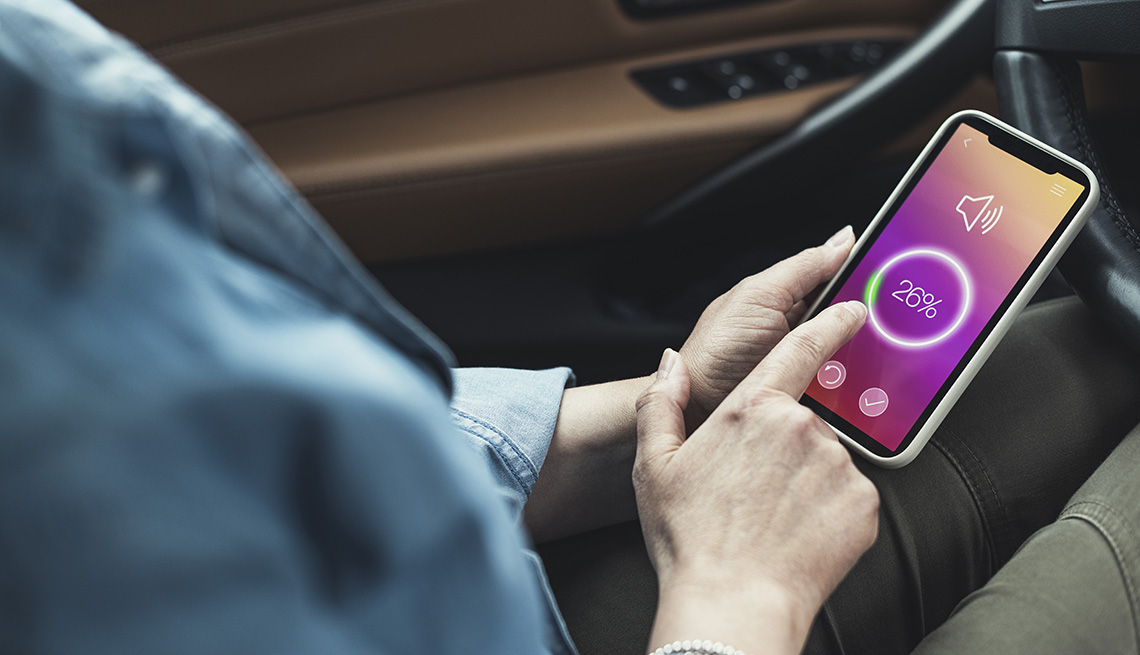Tech Tools and Gadgets You Need if You Have Hearing Loss
Each one of these makes everyday life easier!
Today, people with hearing loss can live full, rich lives, thanks to technology that helps them communicate more effectively, remain independent and productive, and keep doing the things they love. If you’ve experienced hearing loss, here are a few technological aids you might want to add to your tool kit.
Alerting Devices
We typically rely on sound to warn us of danger, let us know there’s a visitor at the door, or remind us it’s time to wake up. Alerting devices combine sound with light or vibrations to signal that something we need to pay attention to is taking place. Doorbells that utilize high-volume chimes and flashing lights are a basic type of alerting device. Alarm clocks for people with hearing loss come in many forms. Some have an extra-loud buzz, others have a vibrating bed shaker, and some use flashing lights to let you know it’s time to start your day.
Hearing loss can pose a safety risk. Smoke alarms and carbon-dioxide detectors that signal peril with strobe lights, a low-pitched sound and even a bed shaker device can save lives in the event of an emergency.
Caption Services
Technology makes it easy for people with hearing loss to enjoy television, theaters, and phone calls. By law, cable television, streaming services, and broadcasters must provide accurate, real-time closed captioning for all programming, with very few exceptions. Some apps also help you find movie theaters (and even some live theater productions) that offer complimentary devices, like glasses or portable LED screens, that provide closed captioning, or deliver captions directly to your phone.
CaptionCall is the easy-to-use tech tool that provides advanced call captioning for both landlines and mobile phones, letting you hear and read what the other person is saying in real time. The CaptionCall phone displays big, easy-to-read text that automatically scrolls during your conversation. Using CaptionCall’s mobile app, you can make and receive calls with the same accurate, real-time transcripts on your smartphone or tablet.
Sound Amplifiers and Listening Devices
A variety of personal ALDs, or assistive listening devices, are designed to minimize background noise, override poor acoustics like echoes, and amplify the sounds you want to hear. ALDs, including some that resemble a smartphone and earbuds, can be used on their own. They can also be used as a supplement to a hearing aid when, for example, someone with hearing loss is attending a large family gathering. Personal sound amplification products, or PSAPs, are ready-to-wear electronic devices. These are for people whose hearing loss isn’t severe enough for a hearing aid but can still use a boost in situations like parties, meetings or crowded restaurants.
There are tools available to help you maintain your independence and keep enjoying the people and activities that are important to you. CaptionCall is one of the technology innovations that helps you live your fullest life.
CaptionCall is the tech solution you can order today, no matter what kind of budget you’re on. The CaptionCall Service is available at no cost if you have hearing loss and need captions to use the phone effectively. It is federally funded as part of Title IV of the Americans with Disabilities Act (ADA)1. And complimentary Red Carpet Service means delivery, installation, personalized training, and support are all free.
Order CaptionCall to make phone calls easier on you – at no cost.
CaptionCall is available in the United States ONLY. FEDERAL LAW PROHIBITS ANYONE BUT REGISTERED USERS WITH HEARING LOSS FROM USING INTERNET PROTOCOL (IP) CAPTIONED TELEPHONES WITH THE CAPTIONS TURNED ON. IP captioned telephone service may use a live operator. The operator generates captions of what the other party to the call says. These captions are then sent to your phone. There is a cost for each minute of captions generated, paid from a federally administered fund. No costs are passed along to individuals who qualify for the service. The CaptionCall phone remains property of CaptionCall in order to provide ongoing support, service, and upgrades.





